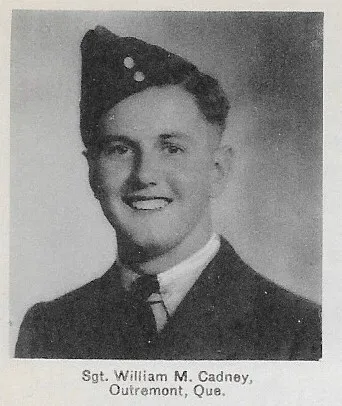Took off from Waddington on an operation to Cologne, Nordrhein-Westfalen Germany.
Aircraft was hit by flak on the approach to the target and crashed at Oberkochen Germany.
Killed includes Cadney: Sergeant Ben Akrigg RAF KIA Rheinberg War Cemetery grave 1. A. 23. Flight Sergeant Reginald Wilfred Gray RAF KIA Rheinberg War Cemetery grave 1. A. 21. Pilot Officer Peter Guy Campbell Wood RAF KIA Rheinberg War Cemetery grave 1. A. 24.
POWs: F/Lt Thomas Roberts Gilderthorpe RAF POW Stalag Luft L3 Sagan and Belaria. WO Leonard Charles Parker RAF POW Stalag Luft L4 Sagan and Belaria.


